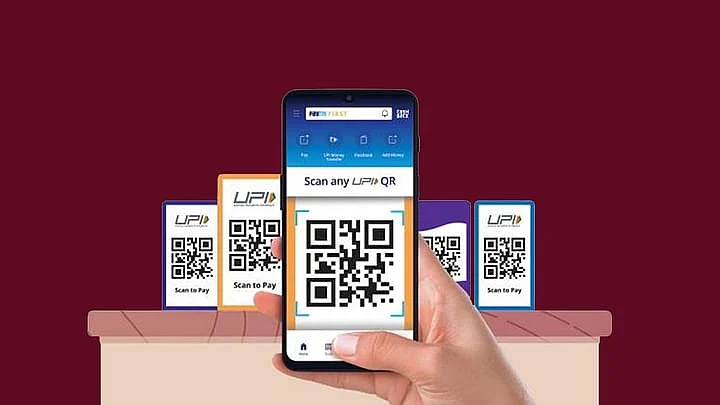In the past few years, Unified Payments Interface (UPI) has taken off for peer-to-peer payments and merchant transactions.
The Reserve Bank of India (RBI) recently published a discussion paper and sought comments on whether its zero-charge framework (where neither party in a transaction is charged) should be continued or whether different parties in the UPI ecosystem can be permitted to charge for their services.
Why Has UPI Been Free?
When a private operator gives something away for free, accusations of predatory pricing are commonplace. The RBI-mandated zero-charge framework has given UPI a leg up over competing modes of digital payment.
Some justifications for the RBI-mandated zero-charge framework are that UPI supports the government’s push for digital payments and that it reduces India’s dependency on global card providers like Visa and Mastercard (witness how Russia has struggled with payments post its Ukraine invasion).
Moreover, the robust adoption of consumer-facing apps like PhonePe, Google Pay, BHIM, etc. has meant that UPI is seen as largely beneficial to consumers, reducing their dependence on cash, especially in India where credit cards are unaffordable to most.
While the crutch of “free to use” may be reasonable to promote the adoption of a new digital payment mechanism, the eventual goal should be for UPI to sustain on its own merits of which it has plenty.
Is Zero Charge the Sole Reason for UPI’s Success?
UPI offers several benefits besides its zero cost (and remember, using UPI requires a smartphone with an Internet connection, a non-trivial cost).
These include instant payment without merchant infrastructure, direct transactions to bank accounts, ease of use via payment apps, etc. and distinguish UPI from other digital modes of payment.
After all, digital wallets need to be topped up and lock up cash with the wallet provider; credit cards have annual fees, are separate from bank accounts, require merchants to invest in PoS infrastructure, and are not suitable for P2P transactions; NEFT/RTGS are available only through banks and are cumbersome to use.
While it is easy to ascribe UPI’s success primarily to the zero-charge framework, one must recognise these other factors as well.
UPI Has Several Limitations
While hugely popular, UPI has several limitations related to availability (not available for high value transactions), reliability (high transaction failure rates), trustworthiness (susceptible to fraud), and consumer friendliness (has no grievance redressal mechanism). Many of these are linked to the technical infrastructure that underlies UPI.
NPCI (a private consortium of banks) and banks themselves wield significant influence over UPI via their control over the middleware (payment gateways) and backend (banking infrastructure).
Neither payment apps nor users have control over this infrastructure. If a user has a UPI-linked bank account through a bank that has a high technical failure rate, they must live with transaction failures or switch to another bank. Likewise, if a user experiences a fraudulent transaction, they need to approach the recipient bank to remedy the situation.
Removing the Zero-Charge Mandate & NPCI’s Control Over UPI Can Spur Innovation
Whatever the reasons for its success, with its widespread adoption, UPI is now here to stay.
Regulators must now switch their focus on ensuring fair competition in the digital payments space. The zero-charge framework gives UPI an advantage over other digital payments and a big task for regulators is to determine how it can be phased out.
Payment apps have made payments easy through user interaction design, have introduced audio speakers that notify merchants of incoming payments, made expense tracking features available, among others.
These have shown that the consumer-facing side of the UPI ecosystem, with payment apps vying for consumer attention has experienced innovation. The same cannot be said of the middleware and backend layers of UPI which are under NPCI and bank control.
Liberalising the regime to provide avenues for competition in each layer of UPI – user-facing apps, middleware connecting apps to banks, and termination points at banks - can further improve India’s digital payments infrastructure.
For example, allowing competition to NPCI in operating payment gateways, or to banks through digital-only bank accounts (or other UPI-capable accounts) can help address UPI’s limitations.
Further, market participants can invest in technical infrastructure to improve transaction reliability and can use analytics to improve trust. They can also offer transaction insurance and enable high-value transactions, if allowed to charge for transactions.
Also, greater adoption and technological improvements imply that the marginal cost per transaction will continue to decline. Thus, many participants may choose to offer full or partial zero-charge UPI, even in the absence of a specific regulatory requirement.
Doing away with the mandatory zero-charge framework will spur providers to innovate in digital payments to differentiate their products. Moreover, the opportunity to earn profits can also attract new players to participate in various layers of UPI, furthering competition in a market that is currently dominated by a handful of players at the front-end and monopolised by NPCI and banks at the back-end.
(Rohan is an Assistant Programme Manager and Mihir is an Adjunct Fellow at The Takshashila Institution. This is an opinion piece and the views expressed above are the author’s own. The Quint neither endorses nor is responsible for the same.)
